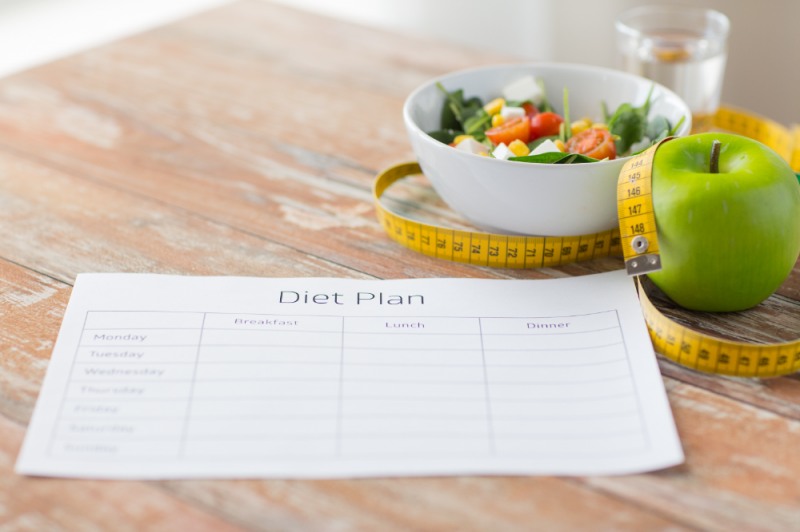Best Foods for Weight Loss: Protein and Low-GI Carbs to Kickstart a Healthy Week
혈당 속도 늦춰 지방 축적 억제하는 저GI 탄수화물
Protein plays a critical role in maintaining muscle mass and boosting metabolism, helping you feel full longer and aiding in body fat reduction. Key protein-rich foods include chicken breast, salmon, eggs, and Greek yogurt.
Chicken breast is a high-protein, low-fat option, delivering 27 grams of protein and just 3 grams of fat per 100 grams. It supports fat loss by preserving muscle mass and promoting the use of stored fat for energy. Without sufficient protein during weight loss, muscle loss can occur; chicken breast helps maintain lean mass while aiding fat reduction.
Salmon, providing about 22 grams of protein per 100 grams, is rich in omega-3 fatty acids, which enhance fat breakdown. Chronic low-grade inflammation contributes to fat accumulation, but omega-3 fatty acids help counteract inflammation, improving lipid metabolism and supporting fat reduction.
Eggs are a complete protein source, containing all nine essential amino acids in balanced proportions. They promote muscle protein synthesis and are effective for fat loss. Compared to bread or cereal of equivalent calories, eggs provide longer-lasting satiety, reducing overall calorie intake.
Greek yogurt, with over 10 grams of protein per 100 grams, is also rich in probiotics. Digesting Greek yogurt requires more energy, modestly increasing calorie expenditure, while its probiotics support a healthy gut microbiome, which plays a key role in digestion and weight regulation.

Low-GI Carbohydrates to Stabilize Blood Sugar and Prevent Fat Storage
Unlike refined carbohydrates, which cause rapid blood sugar spikes and promote fat storage, low-glycemic index (GI) carbohydrates are absorbed slowly, preventing insulin surges and reducing fat accumulation. Oats, brown rice, and sweet potatoes are prime examples of low-GI carbs.
Oats are rich in beta-glucan, a soluble fiber that slows digestion and mitigates blood sugar spikes, helping to curb fat storage. Beta-glucan forms a viscous gel in the stomach by absorbing water, prolonging satiety. It also lowers LDL (bad cholesterol) while raising HDL (good cholesterol), creating an optimal environment for fat burning.
Brown rice contains about three times more insoluble fiber than white rice, which promotes bowel regularity and may reduce fat absorption. With a GI of 50–55, compared to white rice’s 73–75, brown rice supports gradual blood sugar increases, improving insulin sensitivity and reducing fat storage. Sprouted brown rice contains GABA, a neurotransmitter that may help regulate stress responses and reduce stress-induced overeating.
Sweet potatoes, with a GI of 44–50, are highly effective at preventing blood sugar spikes and boosting fat loss. Their resistant starch reaches the gut undigested, where it functions as a prebiotic, supporting gut health and potentially reducing fat absorption.
Lim Hye Jung, medi·K TEAM press@themedik.kr
Headlines
-
 Healthcare
Healthcare
Finding a Lump in Your Breast: Why It’s Not Always Cancer and What to Do Next
-
 Healthcare
Healthcare
As Winter Bites, Pet Kneecaps Slip: The Hidden Threat of Patellar Luxation in Dogs and Cats
-
 Wellness
Wellness
Korean Herbal Tea Culture: A Wellness Tradition for Body and Mind
-
 Healthcare
Healthcare
How to Counteract Caffeine’s Effects for Better Sleep
-
 News
News
Celltrion Launches Aptozma Biosimilar in U.S. Market: 35% Price Reduction and Blue Cross Coverage for Autoimmune Treatment
-
 Healthcare
Healthcare
Blue Light: Is It Really a Threat to Your Eyes and Health?
-
 Healthcare
Healthcare
The Hidden Health Risks of Your Showerhead: Why Regular Cleaning Matters
Doctors & Hospitals
-
 Healthcare
Healthcare
Eczema: Blending Conventional Relief With Korean Herbal Medicine for Lasting Skin Health
-
 Healthcare
Healthcare
Warts: Beyond Simple Removal—Focus on Immunity for Lasting Relief
-
 Healthcare
Healthcare
AI-Powered Smartphone Tool Opens New Path for Early Autism Screening in South Korea
-
 News
News
Korean Surgeon Pioneers Remote Bladder Cancer Surgery Training Using Da Vinci 5 Platform
-
 Healthcare
Healthcare
Myocardial Infarction Risks Surge in Fall: How to Protect Your Heart
-
 Healthcare
Healthcare
Innovative Korean Acupuncture Therapy Offers Hope for Acne Scar Treatment
-
 Healthcare
Healthcare
Thyroid Surgery and Recovery: Essential Post-Operative Care Guide






